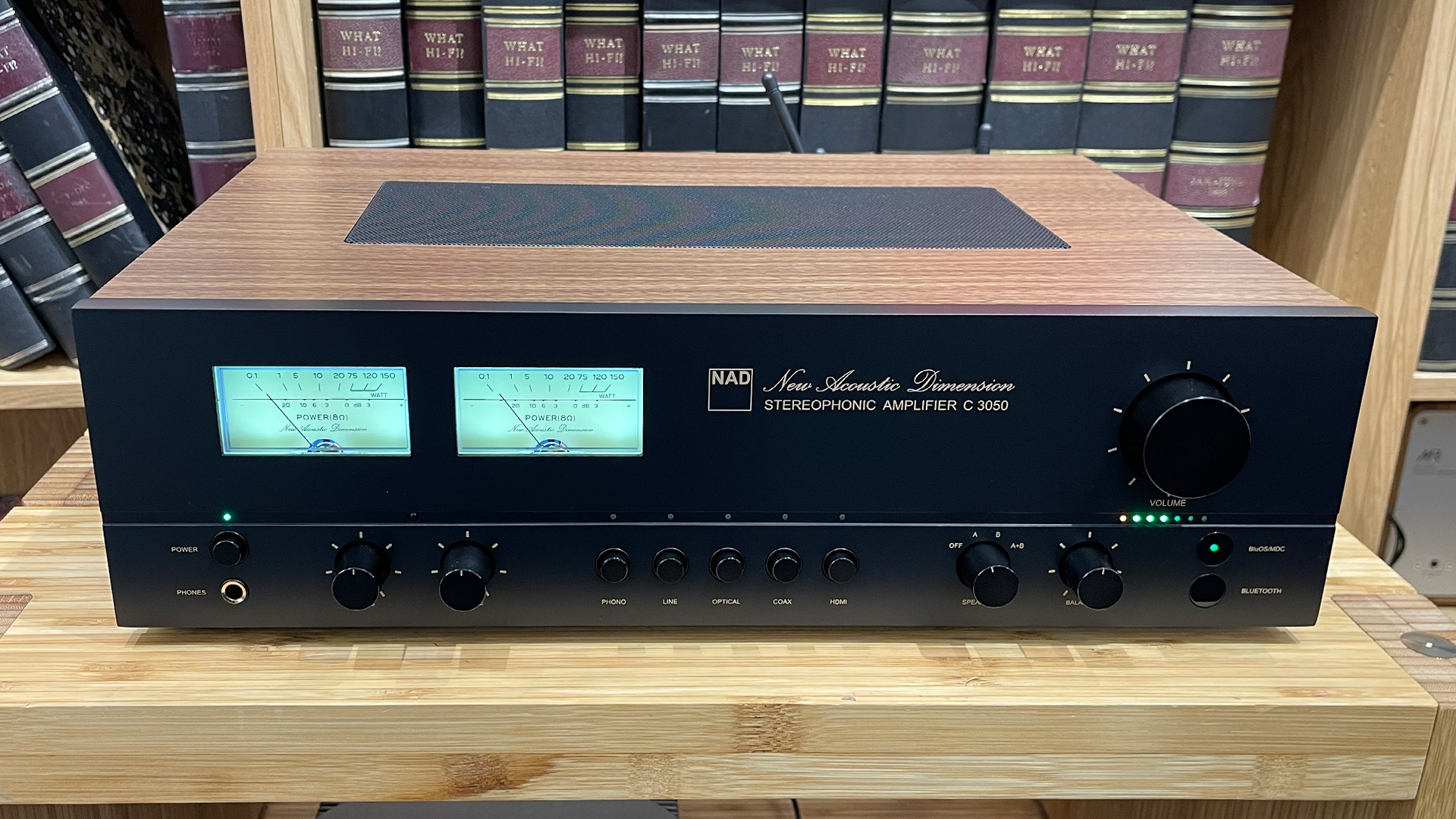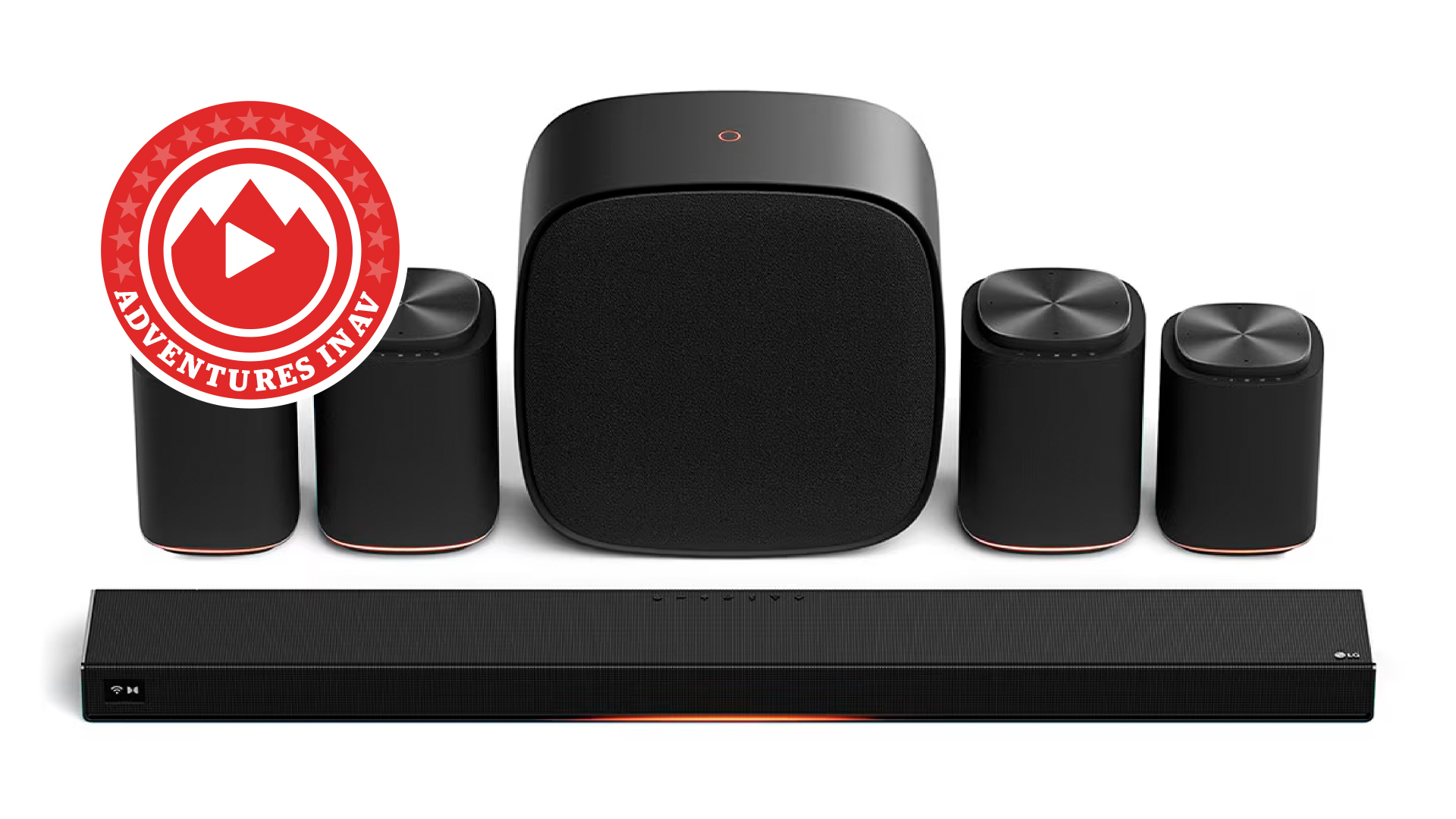What Hi-Fi? Verdict
Equip the NAD C 3050 with the BluOS streaming module and it becomes a highly appealing just-add-speakers stereo solution
Pros
- +
Clear, spacious and expressive presentation
- +
Nicely made and finished
- +
Good moving magnet phono stage
Cons
- -
Lack of DSD file compatibility
- -
Some feature gaps
Why you can trust What Hi-Fi?
NAD’s C 3050 is more than it initially seems. On the surface, it’s yet another hi-fi product that has boarded the retro design train. But, look closer and you will find real engineering substance behind those admittedly rather appealing mechanical power meters.
The headline feature, and the main differentiator between the C 3050 and excellent stereo amplifier rivals such as the Arcam A15 or the Rega Elex Mk4, is the option to add a streaming module. Called, rather catchily, the MDC2 BluOS-D, the module is based on a platform developed by NAD’s sister company, Bluesound.
Ticking this box may raise the price from the standard amplifier’s £1349 / $1699 / AU$2699, but it turns the C 3050 into an extremely neat and characterful just-add-speakers streaming system.
Features & connectivity
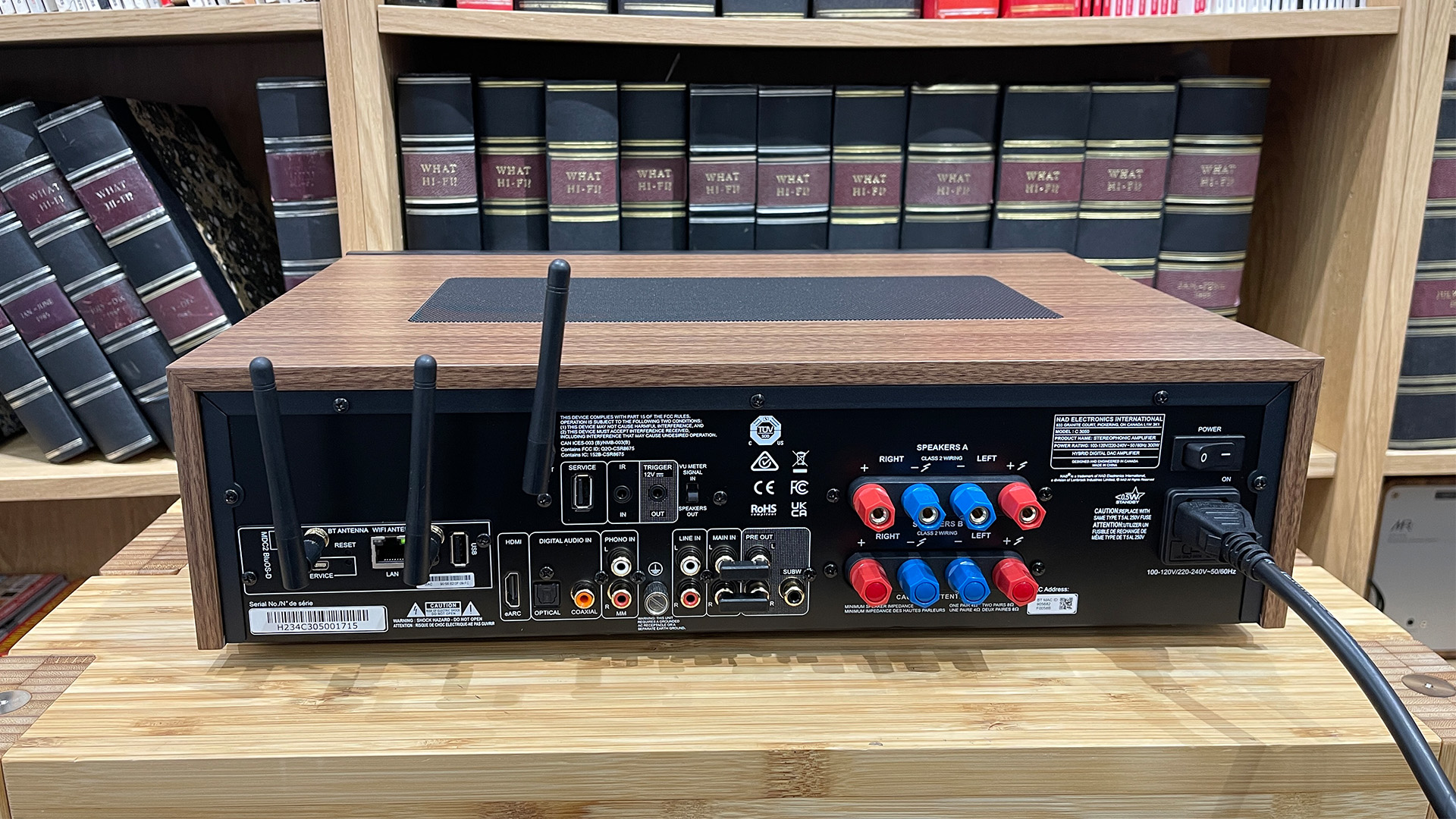
The NAD brand is built on good value electronics, and even in base form, the C 3050 amplifier still has a lot going for it. It is well equipped with a moving magnet phono stage, two-way Bluetooth (of the aptX HD variety), coax and optical digital inputs and a healthy power output of 100 watts per channel.
There is also a front panel-mounted 6.3mm headphone output and, rather usefully, an HDMI eARC input to help the NAD integrate into an AV set-up.
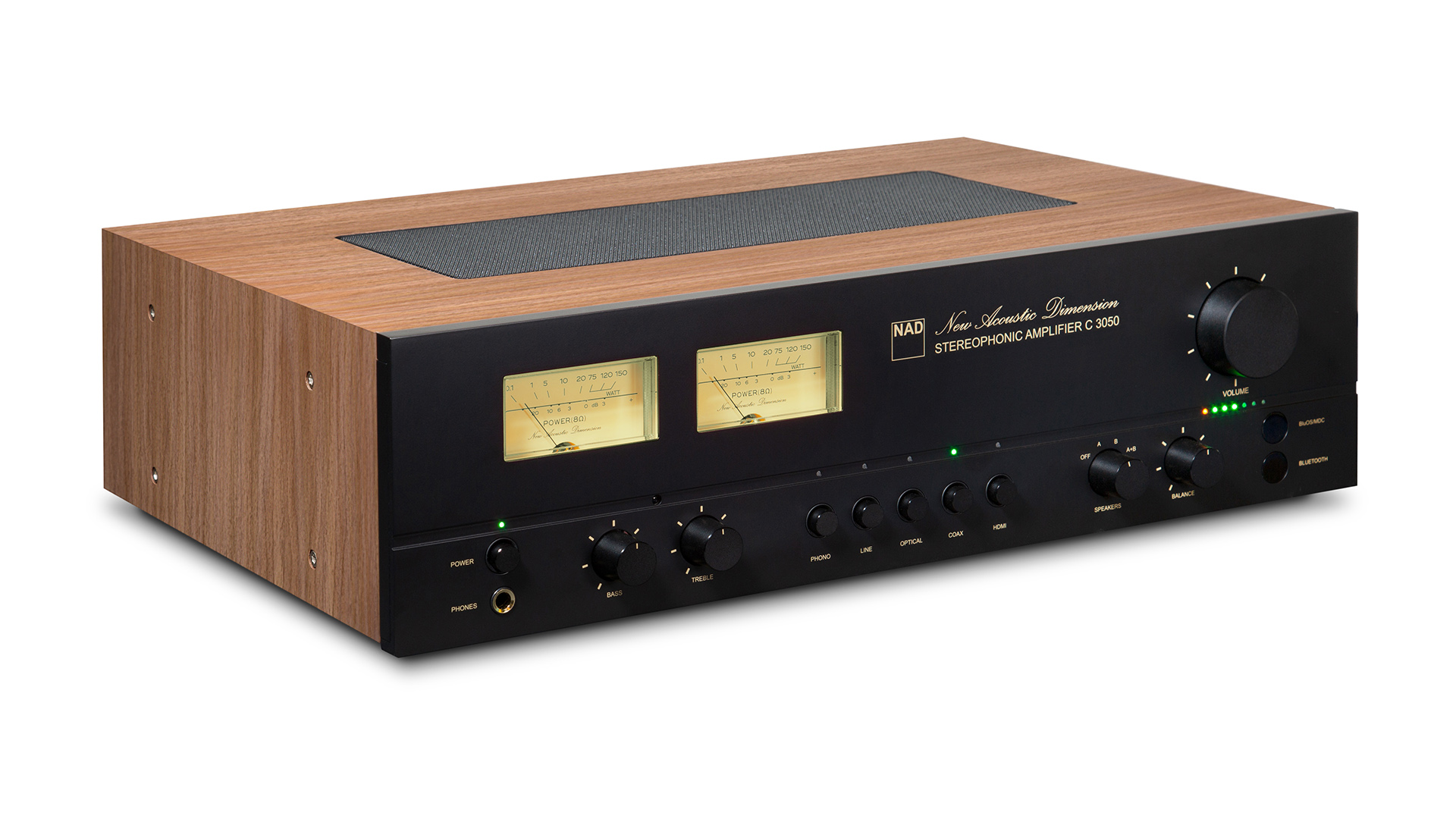
Sources Network streaming, Bluetooth
Network Wi-fi and ethernet
Inputs Line level x 1, Phono MM, USB Type A, optical, coaxial
Outputs Preamp, subwoofer, speaker A and B
Headphone output 6.3mm
Max file resolution 24-bit/192kHz
Streaming features UPnP, AirPlay 2, Spotify Connect, Tidal Connect, Qobuz, Amazon Music Ultra HD, Deezer, internet radio, Bluetooth aptX HD
Power output 100 watts per channel (into 4 and 8 ohms)
Dimensions (hwd) 11 x 45 x 35.5cm
Weight 10kg
Finishes x 1 (Dark grey front panel/walnut casework)
Add the optional streaming module, and the product’s functionality increases massively. A fully-loaded C 3050 can stream music files from your home network, play internet radio or access any of the usual streaming services through wired or wireless means.
The MDC2 BluOS-D module’s range of abilities should be extensive enough for most users, but we note that there are some obvious gaps in its specifications. It doesn’t play DSD files and the PCM files it does play are limited to a maximum of 24-bit/192kHz.
The latest hi-fi, home cinema and tech news, reviews, buying advice and deals, direct to your inbox.
While we suspect neither of these will be an issue for the vast majority of users, those with more ambitious tastes in file formats may feel shortchanged here.
While Spotify and Tidal in Connect form are available, at the time of writing, Qobuz Connect isn’t. Similarly, Apple AirPlay 2 is on the menu but Google Cast isn’t. Streaming is a software-based world, and that means shortcomings such as these can be remedied with updates.
It will be interesting to find out whether NAD feels the need to do so. We can only hope.
Unusually, NAD has included Dirac Live room equalisation software as part of the MDC2 BluOS-D package. This is the limited bandwidth version of the room correction system and operates from 20Hz to 500Hz. If you want the full range, full-fat version that works up to 20kHz, you’ll have to buy it from Dirac’s online store for around £75/ $99 (around AU$154).
Whether the additional expense is worthwhile is a matter of context. In our acoustically treated listening room, the basic Dirac Live system gives a slightly more even frequency response when using Fyne Audio’s large F502S floorstanders, but it comes at the expense of a slight degradation of low-level dynamics and rhythmic drive.
However, we can certainly see benefits of using the system in rooms that have more serious acoustic issues, so in those cases, the premium version of the software may well make sense.
Build & design
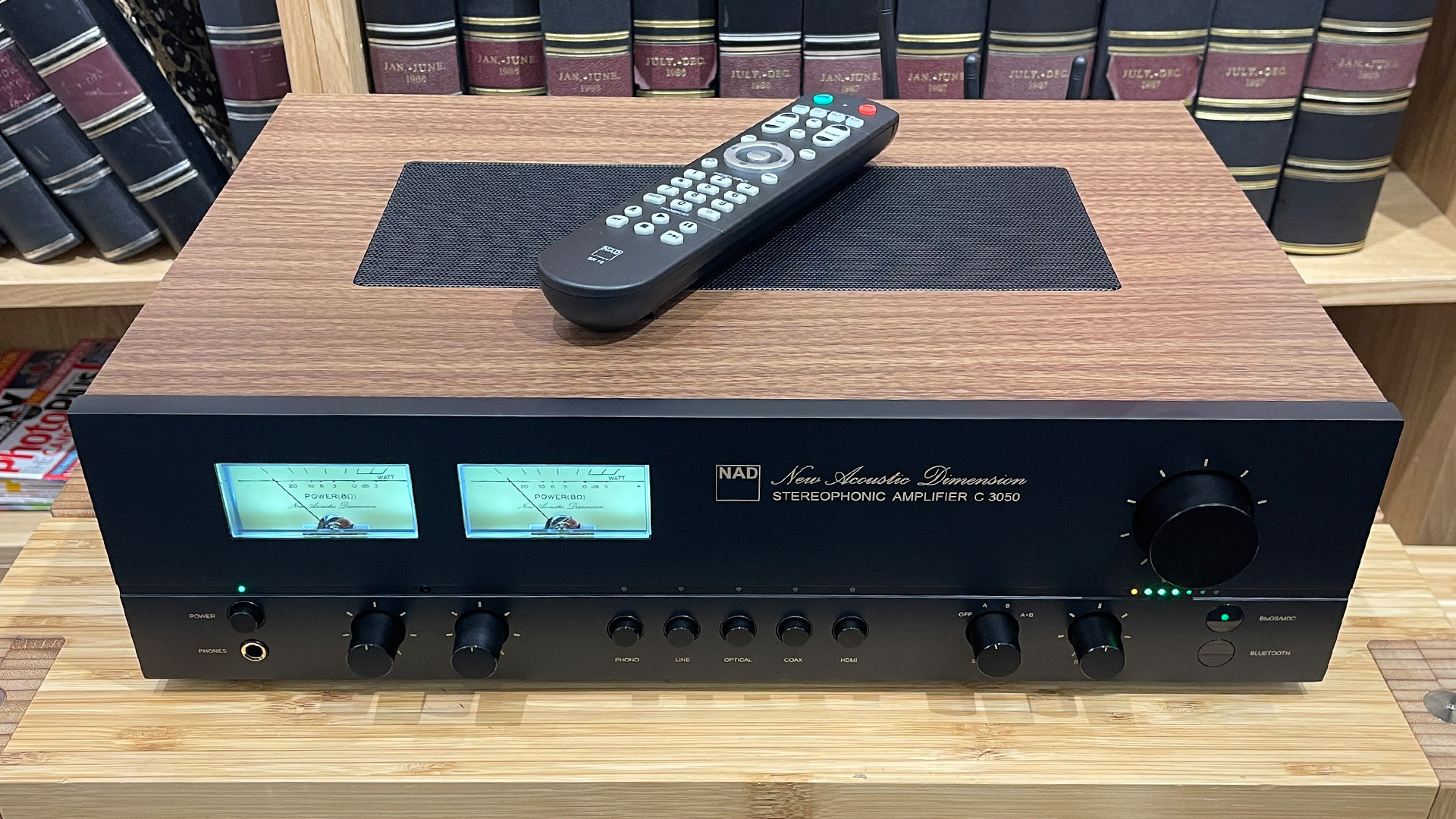
Take a look inside the C 3050’s walnut vinyl-covered casework and you will find NAD’s trusted HybridDigital UcD output stage delivering a solid 100 watts per channel into both 4-ohm and 8-ohm speaker loads. The output rises to a claimed 135 watts per channel on short-term dynamic peaks.
That should be enough to drive any price-compatible speaker to decent levels in all but the largest of listening spaces. We certainly didn’t have any problems driving a range of speakers, including the Acoustic Energy AE300 Mk2, the KEF LS50 Meta, the Fyne Audio F502S and the Neat Mystique Classic floorstanders (reviews coming soon).
A Texas Instruments PCM5242 differential 24-bit/192kHz DAC chip is at the heart of the C 3050’s digital circuits. NAD’s engineers chose this DAC for its dynamic performance and resistance to clock jitter.
We have no issue with the C 3050’s build and finish. It feels like a quality product with solid casework and sturdy controls. The fit and finish are good too, giving the NAD a proper premium aura. The streaming side is taken care of by the well-established BluOS app. This is one of the better pieces of streaming control software on the market and is stable, easy to use and intuitive on the whole.
It doesn’t take long to get a sound from the C 3050 once we get it out of the packaging. Our sources are the Technics SL-1000R/Nagaoka MP-200 record player to test the NAD’s moving magnet phono stage, Naim’s ND555/555 PS DR music streamer to feed the analogue and coaxial inputs, alongside a Cyrus CDi for the optical.
We have an iPhone 12 Pro Max to test the C 3050’s Bluetooth performance. Of the list of aforementioned speakers, we spend the most time with the KEF LS50 Meta connected to the NAD, as these seem the most appropriate partners in terms of price and quality.
Sound
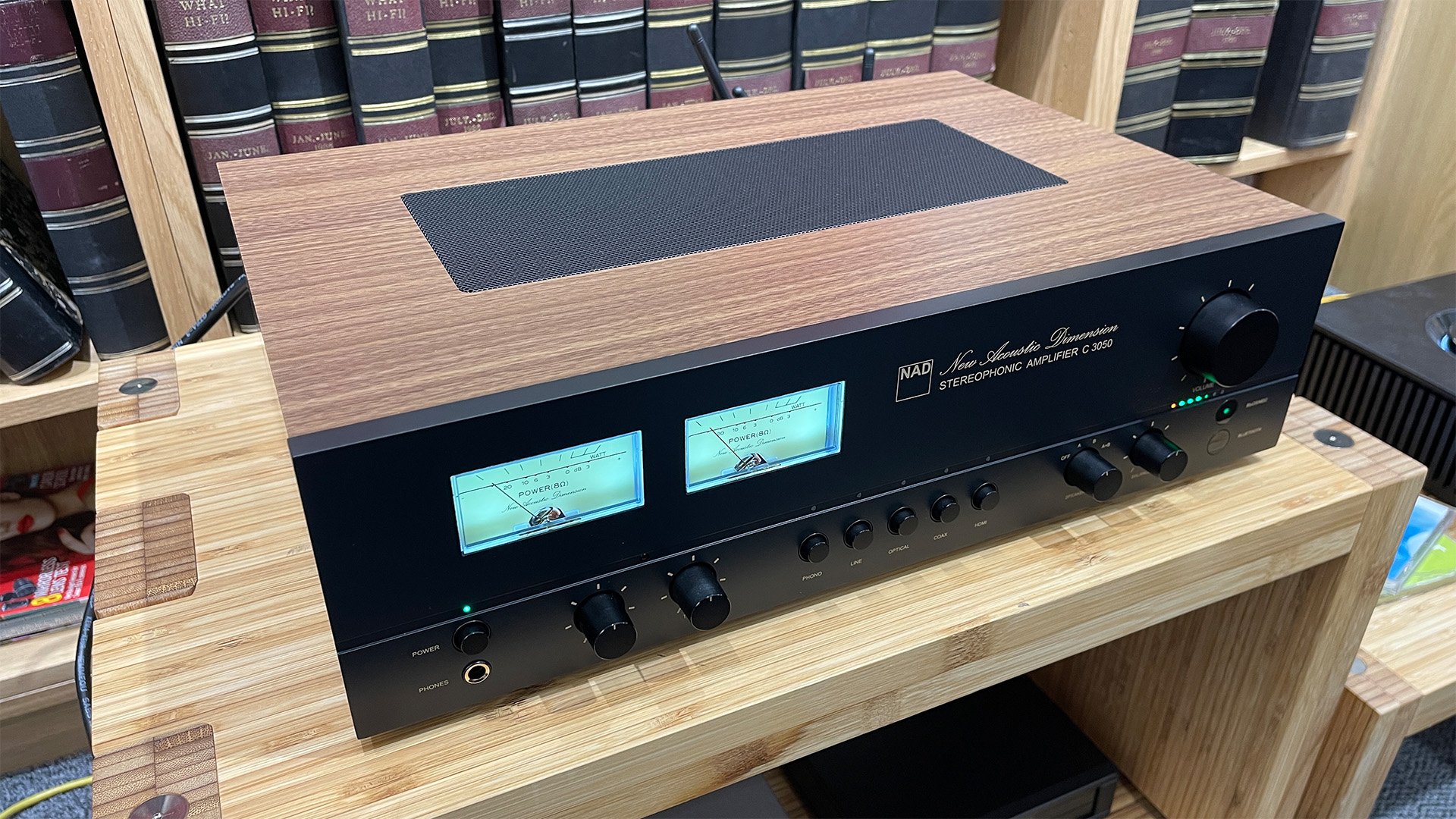
We start by listening to the NAD using the built-in streaming module. It all works smoothly, with none of the clunkiness that a less well-engineered add-on solution could suffer from.
And you know what? The C 3050 sounds great.
As we work through a collection of music that spans a broad range from a small-scale folk group like The Unthanks (the Mount The Air album) and Rachmaninov’s Symphonic Dances Op.45 through to Nick Cave’s Wild God set, the NAD doesn’t skip a beat.
It has the midrange clarity and fluidity to shine with a vocal-based group such as The Unthanks. Detail levels are good, but it's the organic way in which the C 3050 arranges all that detail that draws us into the music. It captures the texture and tone of the sisters’ voices superbly and so communicates the heartfelt passion in the title track, Mount The Air, better than most alternatives we’ve heard.
The NAD doesn’t just excel with the subtleties either. It may be refined, but when the music demands, there is bite here too. The Rachmaninov piece shows the C 3050’s dynamic prowess and ability to convey the piece's power and authority. It sounds muscular, delivering lows with a richness and punch that’s enjoyable. The presentation is airy but still manages to retain the music’s exuberance.
Soundstaging is reasonably expansive and nicely focused. It stays stable even when the music becomes demanding. Our listening room is a decent size at 3 x 7 x 5m (hwd), and the C 3050 has no trouble filling it with sound.
Of course, it can be made to sound stressed if you really push things. But provided your speakers aren’t unusually insensitive (or your room isn’t massive), we think this amplifier has you covered.
Feeding Mary J Blige’s No More Drama from our Naim music streamer into the C 3050’s line level input proves that the NAD has surefooted rhythmic drive and a good degree of punch. It delivers the album’s basslines with verve, while neatly swerving the sludgy feel that such a full-bodied and rich low-end can sometimes impart.
The story remains positive when we try the NAD’s digital inputs. The sound through these retains the characteristics we so like from the streaming module and line stages, and the on-board DAC has no issue when we work our way through the various music file resolutions from 16-bit/44.1kHz to 24-bit/192kHz.
Even the phono stage is good. It is reasonably quiet but still sounds agile, informative and dynamically interesting. It's good enough to handle the likes of the Rega Planar 2/Nd3 without leaving us feeling that we need to upgrade. Considering the general standard of built-in phono stages in most rivals, it is fair to say that NAD has done a great job here.
Verdict
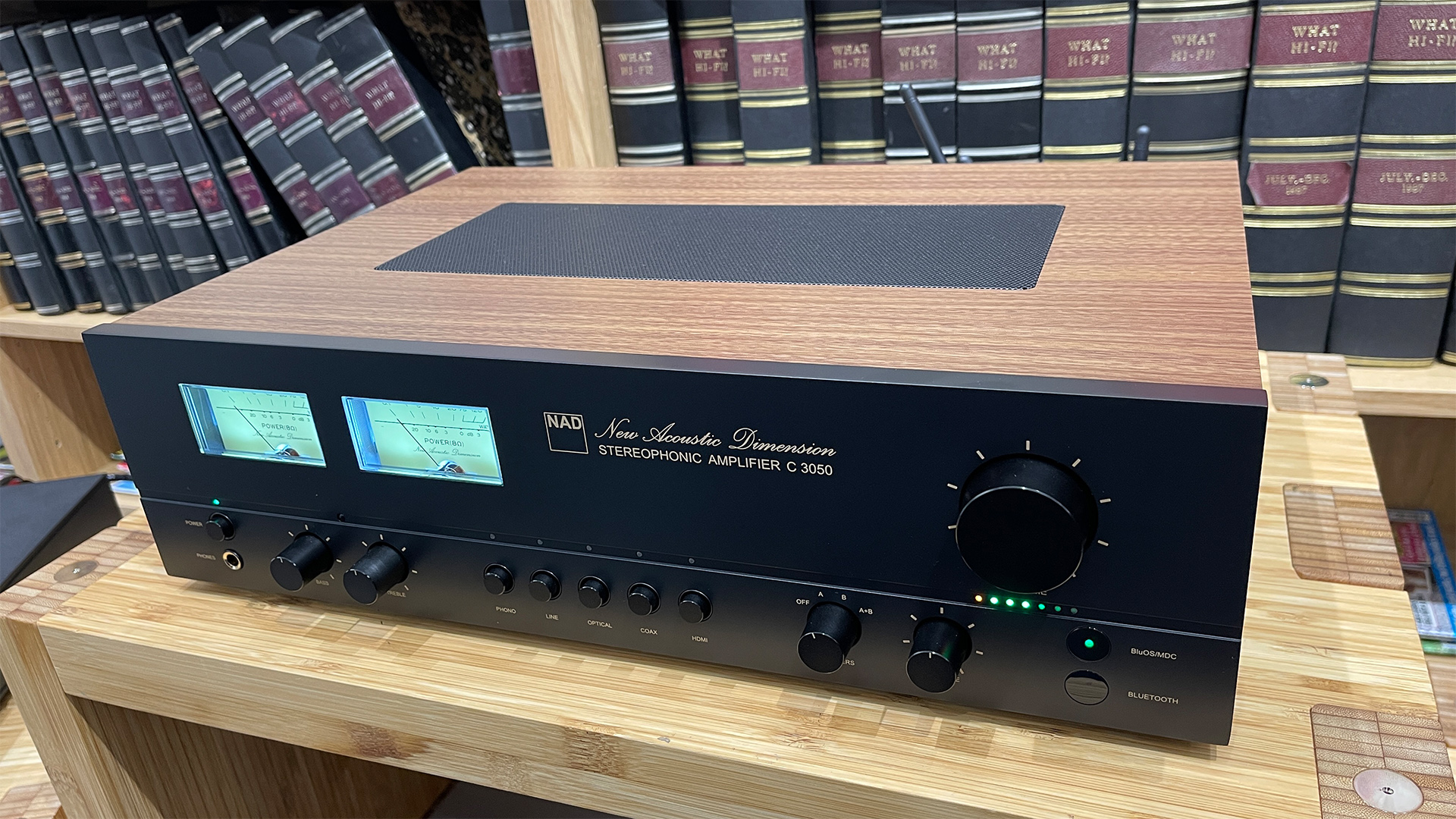
That applies to the complete product. The NAD C 3050 is a high achiever across the board, from the better-than-average Bluetooth performance to the capable DAC module and talented streaming section. While the basic amplifier is a fine performer, it would still struggle to topple class leaders like the Arcam A15.
However, add the MDC2-BluOS-D’s streaming smarts into the equation and the story changes dramatically, catapulting the NAD to class-leading status as far as streaming systems are concerned.
The attractive retro appearance may be the thing that draws people to the C 3050, but it’s the product's all round abilities as a streaming package that makes it such a strong buy. Highly recommended.
Review published: 18th August 2025
SCORES
- Sound 5
- Build 5
- Features 4
MORE:
Read our review of the Ruark Audio R610
Also consider the Naim Uniti Atom
Best music streamers: top network audio players tested by our experts

Ketan Bharadia is the Technical Editor of What Hi-Fi? He has been reviewing hi-fi, TV and home cinema equipment for almost three decades and has covered thousands of products over that time. Ketan works across the What Hi-Fi? brand including the website and magazine. His background is based in electronic and mechanical engineering.
- Kashfia KabirHi-Fi and Audio Editor
- Andy Madden
You must confirm your public display name before commenting
Please logout and then login again, you will then be prompted to enter your display name.
